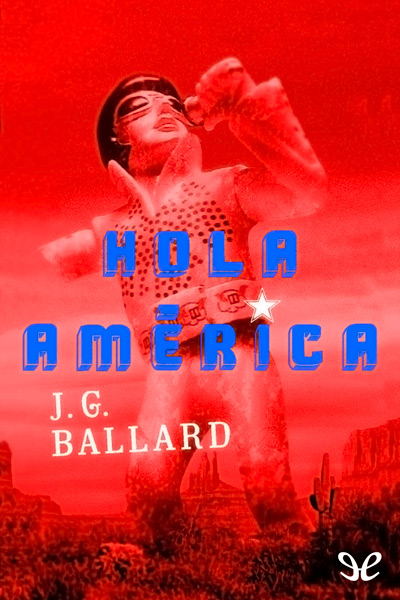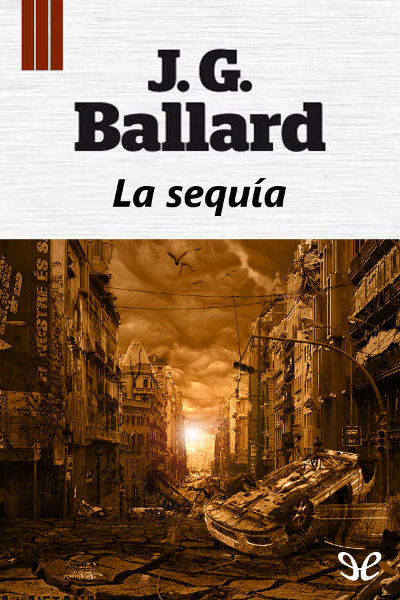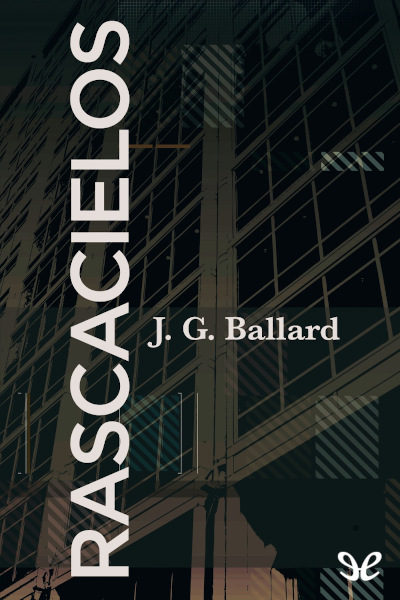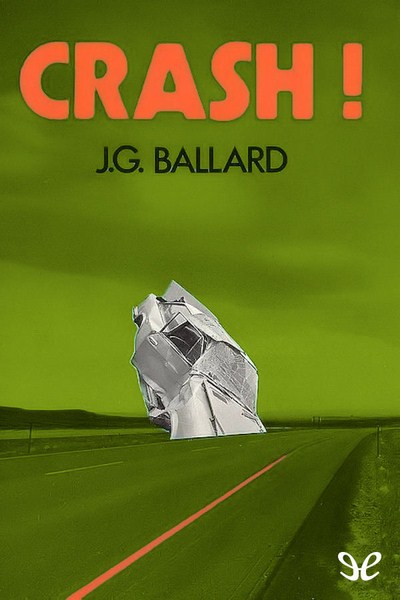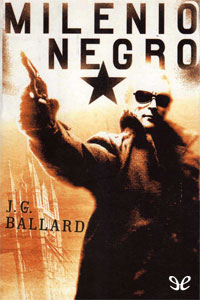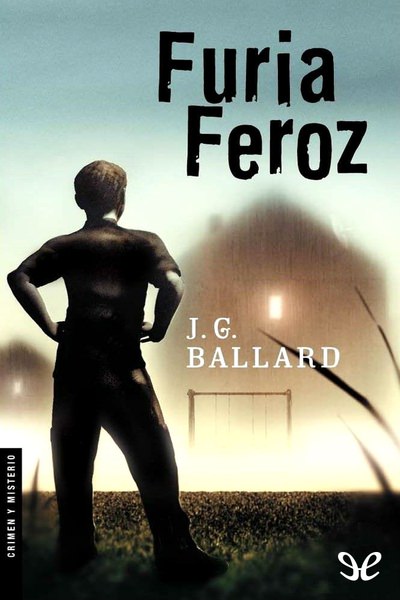oleebook.com
Sorres Rogenques de J. G. Ballard
de J. G. Ballard - Género: Ciencia ficción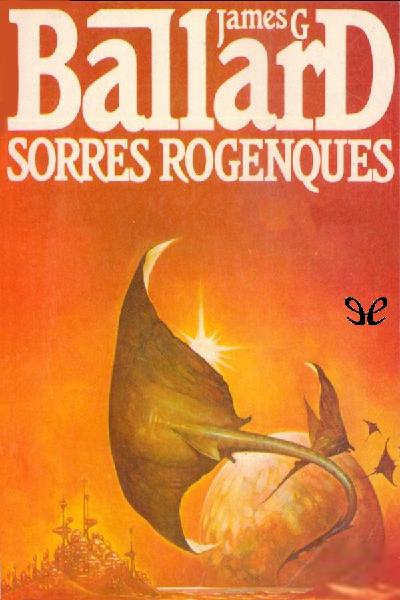
Sinopsis
Sorres Rogenques és un conjunt de vuit narracions curtes aparegudes entre els anys 1956 i 1970. Tenen com a nexe dÂ’unió el fet de compartir un mateix paisatge. Sorres Rogenques és un enclavament turÃstic en decadència enclavat enmig dÂ’un desert on hom pot escoltar música emesa per està tues sòniques, compondre poesia amb ordinadors, o viure en cases transformables que sÂ’adeqüen a lÂ’estat anÃmic dels seus ocupants. Abans hi estiuejava lÂ’stardom del cinema i els més rics financers de la Terra, però ara lÂ’habiten artistes, poetes i directors de cinema dÂ’avantguarda.
Descargar
Descargar Sorres Rogenques ePub GratisLibros Recomendados - Relacionados
Reseñas Varias sobre este libro
Vermilion Sands: A desert resort for artists and wealthy eccentrics
Originally posted at Fantasy Literature
J.G. Ballard is best known for his autobiographical novel Empire of the Sun (1984), along with his early novels The Drowned World (1962), The Crystal World (1964), The Atrocity Exhibition (1970), Crash (1973), Concrete Island (1974), and High-Rise (1975). But many consider his best work to be his huge catalog of short stories, many of which were pivotal in the New Wave SF movement in the late 60s/early 70s. BallardÂ’s style may have been suited to the short form, as it plays to his strengths (hallucinatory imagery, bizarre concepts, powerful descriptions) and avoid his weaknesses (lack of empathetic characters, weak plots, unrealistic motivations).
He has published many short story collections, but the publishing gods have seen fit to be kind and provide readers with a single volume, The Complete Stories of J.G. Ballard, which contains 98 stories (1,200 pages) from throughout his career. Not only is this available in hard copy and Kindle, it is also available for a single credit on Audible, providing 65 hours of thoughtful listening pleasure, read by 5-6 excellent veteran narrators. However, to provide a balanced overview, I will review some of his most famous collections separately.
Vermilion Sands (1971) was first published as a U.S. paperback by Berkley in 1971, and was then published by Cape in the U.K. as a hardback in 1973. It contained the following stories:
"Prima Belladonna" (1956), "The Thousand Dreams of Stellavista " (1962), "Cry Hope, Cry Fury!" (1966), "Venus Smiles" (1957), "Studio 5, The Stars" (1961), "The Cloud-Sculptors of Coral D" (1967), "Say Goodbye to the Wind" (1970), "The Screen Game" (1962), "The Singing Statues" (1962)
Sometimes you encounter a book that is intelligent, brilliantly-written, wryly-humorous, hypnotic, and almost completely resistant to description without reducing it to triviality. All the stories here showcase artists of different mediums, faded film stars now dwelling in obscurity, and wealthy eccentrics, all of whom retreat from the larger world into the faded desert community of Vermilion Sands in the America Southwest. The blurb on some of the editions describes it best:
Vermilion Sands is a fully automated desert-resort designed to fulfill the most exotic whims of the idle rich, but now languishes in uneasy decay, populated only by forgotten movie queens, solitary impresarios and the remittance men of the artistic and literary world. It is a lair for beachcombers, hangers-on and malignant obsessions – a place where sensitive pigments paint portraits of their mistresses in a grotesque parody of art; where prima donna plants are programmed to sing operatic arias; where dial-a-poem computers have replaced poets; where psychosensitive houses are driven to murder by their owners’ neuroses; and where love and lust, in the hands of jewel-eyed Jezebels, pall before the stronger pull of evil.
The themes in the stories are wide-ranging, and feature the most bizarre artistic forms, including delicate operatic singing orchids (“Prima Belladonna”), psychotropic houses that retain the emotions of their owners (“The Thousand Dreams of Stellavista”), paintings that paint themselves (“Cry Hope, Cry Fury!”), a growing metallic sculpture that produces music that drives people to distraction (“Venus Smiles”), automated poetry machines that cause a crisis when they are all vandalized and a publishing deadline looms (“Studio 5, The Stars”), a former pilot who finds a new life as a cloud-sculptor ("The Cloud-Sculptors of Coral D"), living fashion that reflects and enhances the emotions of the wearer ("Say Goodbye to the Wind"), a doomed film production where the actors and crew cannot be bothered to film ("The Screen Game"), and a sonic sculpture commissioned by a reclusive film star (“The Sound Sculptures”).
The collection is internally consistent in tone, with a wonderfully languid and ironic view of the strange and sometimes comical lives of the residents of Vermilion Sands. It might be more accurate to call it artistic fantasy than SF, but labels really donÂ’t do it justice. Instead, I suggest you should read it for yourself. You will not be disappointed.
Overall, Vermilion Sands contains J.G. BallardÂ’s most virtuoso and light-hearted writing. Un much of his darker, melancholy works about lonely astronauts, despondent scientists, and troubled adventurers, there is a sense of playfulness and moments of outright humor. It is also the most unique depiction of fantastical future art forms I have ever encountered, and combined with the decadent and desolate desert backdrop of this strange community with its sand yachts and living houses, it promises to be an unforgettable reading experience.fantastic-weird favorites literature ...more26 s Nate D1,603 1,104
Collected shortly after The Atrocity Exhibition, though largely written long before, this selection of stories mirrors its cohesive collage-assemblage approach. Here, the unifier is a setting and tone, that of a fading resort community where techno-decadent heights of the past rich and famous tenants cast long and eerie echoes over those that move in, ten years later during an unclear economic limbo called The Recess, in their wake. Mostly longer stories, so much time to build up their shifting oddity. I wasn't sure I would be as into the earlier works here, but they actually seem to hold consistent. Despite having been composed over 15 years with four or five novels and possibly hundreds of other stories in between, the story cycle that makes up this volume holds together quite well. May actually be one of Ballard's better works, and I almost invariably prefer novels to collections, which is a testament to the focus and singularity of purpose here. Are his other collections so well-curated?
70s-delerium sci-fi stories18 s RhysAuthor 257 books304
Possibly my favourite Ballard book. It might not be as important as *The Atrocity Exhibition* or *Crash!* in terms of pushing the overfamiliar Ballardian sales patter that the future is already here, that we have adapted to the savage geometries (the motorway overpass, the multiple pile-up) of the modern world to the point where the natural world is now ‘unnatural’ to us; but instead there’s a wistfulness and a wit (exceptionally dry) on display here that’s very much to my taste. For once, Ballard’s penchant for repetition, for riffs on the same themes and language, works beautifully.
The desert resort of Vermilion Sands is the ultimate paradise for creative slackers, where singing sculptures take root and grow plants; where 'psychotropic' houses react to the moods of their owners, sometimes catastrophically; where poetry is written by computers and clothes are ‘alive’ and temperamental; where sands rays glide on the thermal rollers that travel across the fused quartz beaches; and, most magnificently, where glider pilots sculpt the clouds with sprays of silver iodide into giant fluffy seahorses and unicorns. Indeed, the opening story, ‘The Cloud Sculptors of Coral D’, is one of my favourites by any author.
14 s Scott302 358
It's both a great weakness and great strength of short story collections that they usually contain stories from a multitude of settings. Each story has to establish the location, the feel, the tone of the world being explored, which can be great when each one does so well, and draining for the reader when they don't. If the author elects, however, to set each story in the same place or world, then the sense of place in the stories can be built slowly (and eventually taken as a given), at the risk of the reader tiring of the same locale.
Vermilion Sands is among the latter, and its fascinating setting is a strong thread between a series of stories that begin with masterly skill before eventually stumbling a little in the parching desert heat.
When they're good, though, the stories here are very, very good. Ballard was a writer of quite extraordinary imagination, and his works such as The Drowned World and The Island are stunningly inventive. Flashes of that genius can be spotted in this collection.
The first story in the collection - The Cloud-Sculptors of Coral D is a genuine pearl, a short story that exemplifies the best in the form and will sticks in your memory for years. After reading it, and the two following stories, I was telling all my friends to put Vermilion Sands on their reading lists, that this was classic Ballard at his best. The second story - where florist with a shop full of singing plants meets a woman whose voice sets them into a melodic frenzy - is almost equally rewarding, and both perfectly establish the strangeness and enticingly down-at-heel decadence of Vermilion Sands.
And it is a hell of a setting. Vermilion Sands is a Palm Springs-style holiday town, once the place to be seen for the rich and famous, that sits aside a great lake of sand, whose sandy tides and barbed sand rays wash against the town's endless beaches. The sand lake is a treacherous thing, full of reefs and dangers, sailed by wheeled yachts that seek it's mysteries. The fact that the lake is sand rather than water is never questioned, its strangeness just part of the odd, almost magical realism of the nearby town.
And it is very odd. Sonic sculptures play eerie music through echoing mansions, the keening of strange musical plants floats across the desert, houses that twist and grow and adapt according the moods and character of their owners lie abandoned to the creeping sands. Into this setting Ballard brings a cast of flawed characters, some running from problems, others washed up in a decaying holiday town and pinned to the spot by ennui, others struggling with art, love and obsession.
The first three stories, balance the fantastic and the personal in fascinating ways, and then... things get a little samey. A mysterious but wounded woman arrives in Vermilion Sands and attracts the attention of (an invariably) male protagonist. Some oddness happens, and the woman leaves/absconds/abandons the man who has become her lover.
The setting never tires, and nor does Ballard's inventiveness, but the mystery woman device does, and the stories suffer a little for it. By the final story I was starting to tire a little, leaning a little on the memories of the earlier stories to get me through.
Overall though, this is a fantastic collection, one that is worthy of a read, even only if you read the first half. If you aren't up for even that, do yourself a favor and read The Cloud-Sculptors of Coral D. It's a masterclass of a short story.
3.5 Mysterious women (who simply must flee town at the first opportunity) out of five.
P.S. As a stand-alone story The Cloud-Sculptors of Coral D gets the full five mysterious women out of five. science-fiction short-stories12 s Rebecca GransdenAuthor 19 books235
This is Ballard amped up to eleven. The surreal here is worn a badge. Direct reference is made throughout to his most obvious touchpoint - Dali. Repetition defines this collection. The same riffs, images, even scenarios, recur; seemingly to cement the impression that Vermilion Sands is self-perpetuating. Latent urges manifest themselves in the physical world. Clothes reveal the inner psyche, sonic sculptures replay voices which mean nothing and everything, and the fabric of the living spaces warps and twists to reflect distilled memory and untapped appetites.
The women whose focus these stories are almost exclusively upon are unknowable creatures driven by selfish desires; duplicitous, and either neurotic or manipulative, or both. This is the male gaze reduced to the raw. There is something mesmeric about the cartoonish manner with which these characters are drawn, as if to accentuate the altered state underpinning the materializing subconscious landscape. IÂ’m reminded of a PS3 game called Deadly Premonition which is similarly episodic and repeats itself endlessly. Made by someone obsessed with Twin Peaks, but getting things just a little off, it includes sadistic and voyeuristic killings of women which I should find appalling. There is, however, a very real sense of unease in the male anima which warrants addressing. This is echoed throughout Vermilion Sands. This collection could be viewed as misogynistic but I think that over simplifies what is happening here. The reality on offer here is a construct, a canvas for the male relator. It is from him these vacuous beings emerge, and everything created in this world they are a telegram from the soul.
Vermilion Sands is ultimately defined by itÂ’s borders and limitations. As a collection it most probably would have made a better novel, but pick any one story and itÂ’s an endless feast. There is a road from this place and I imagine those who leave to reach the outer limits and dissolve into the paint soaked ether.8 s Oscar2,046 532
‘Vermilion SandsÂ’, de J.G. Ballard, recoge nueve relatos escritos entre 1956 y 1970. Todos están ambientados en el sugerente lugar del tÃtulo, una ciudad de vacaciones para famosos, artistas y cineastas, un lugar onÃrico, casi una quimera. Se trata de una ciudad y una geografÃa salidas de la mente de Ballard, donde existen mares de arena navegados por barcos con ruedas, arrecifes de piedra y rayas que vuelan por dichos mares. A lo largo de las páginas de esta antologÃa, nos encontraremos con más maravillas, como ropas vivas y casas psicotrópicas que absorben las emociones de sus inquilinos.
Estos son los nueve relatos incluidos:
-Los escultores de nubes de Coral D.
-Prima Belladonna.
-El juego de los biombos.
-Las estatuas cantantes.
-Grito de esperanza, grito de furia.
-Venus sonrÃe.
-Dile adiós al viento.
-Estudio 5, Las Estrellas.
-Los mil sueños de Stellavista.
Sin duda, un libro fascinante.
5-estrellas antologÃa-recopilación ciencia-ficción ...more7 s Graham P247 26
What makes this collection is the destination, the locale, the atmosphere - it's a futuristic vision of a Dali painting within an apocalyptic Key West / Las Vegas wasteland. Stingrays fly the red deserts, gem-encrusted scorpions burrow in the windswept sand, poetry machines go haywire with an ancient curse, and singing statues haunt the shorelines. Yet it is repetition of the character struggle between the wayward artist/poet man and the wealthy murderous muse that becomes one-dimensional after a while. Still, this doesn't fully detract this collection's power, especially during these Covid blues when we readers need to get away to a strange, wonderful place. This book achieves that journey.6 s TerenceAuthor 18 books62
A lesser known work but full of ideas and abandoned ennui, Vermillion Sands strikes me surrealism in purgatory. A thriving tourism destination full of movie studios and strange discos, morphing mansions and old movie stars. Each chapter is a short story set in a landscape of affluence and decay. Ballard is in full command of his prose and ideas and it is a striking work written between "Atrocity Exhibition" and "Crash" that sets the tone for "Super-Cannes" with all the Ballardian dystopia.science-fiction-fantasy surrealism weird6 s Bill1,744 95
J.G. Ballard is one of the most unique, strange writers I've ever read. The first story of his that I read was The Drowned World, which pictures a world that is sinking under water. He wrote that in 1962 and it was one of his earliest books. I next read, The Wind from Nowhere, which pictures mankind forced to live underground to avoid the ever increasing winds that scour the Earth's surface. Even those stories portray his unique writing style, his moodiness, his ability to describe the settings he is trying to picture.
Since then I've read High-rise, Crash, Hello America, etc. Some of them are somewhat inaccessible; you are an observer in these strange worlds or situations that he is describing. But, even with them, you have to find out what will happen to the people he places in such disturbing surroundings.
Vermillion Sands was written in 1971 and is a collection of Ballard's short stories. They all portray the decaying life of artists and rich people living in the area of Vermillion Sands. It's another strange futuristic world; a desert sea, sand rays, musical sand towers, etc. Fascinating and Ballard sort of enfolds you in the life and setting. Artists make clothing from bio materials that have a life of their own. Poets no longer write their own poetry, but use machines to draw themes and words to create poetry and then set out the parameters for people to read them. Artists soar to the skies to create art from the cumulus clouds that float above them. Rich people sail the sand seas in sail ships.
It's a fascinating scene and the stories that surround these moody settings are also interesting, somewhat emotionless, but still keep you reading to see how they resolve. Another interesting work from Ballard.chemical-fiction sci-fi5 s Keith Davis1,087 13
If I could spend a weekend in any science fiction world it would be Vermilion Sands. I would not even have to think twice about it. These linked short stories are jewels that are perfectly arranged to look they were scattered at random. They are "Last Year at Marienbad" meets Jack Vance's Dying Earth.5 s Giovanni Giusti34 1 follower
Classicone. Forse non una delle cose migliori di Ballard, ma sicuramente una delle più suggestive.science-fiction5 s Matt VickersAuthor 1 book8
J.G. Ballard makes me uncomfortable. In computer animation there is the concept of an uncanny valley. We empathise with and find aesthetically pleasing objects that have human qualities, up until the point that they come close to appearing completely human. It's at this point, where we fixate on the not-human qualities - as with cyborgs, avatars, virtual pop stars - that we reject them. Ballard mines an uncanny valley of psychology, not where the physical appearance of an object is too human, but where its desires and behaviours are. Living clothes that sheathe and caress the wearer. Homes that sigh, breathe, and murder. Metal sculptures that sing symphonies and grow endlessly, spurred on by an ineluctable survival instinct. In Vermilion Sands, the inanimate encroaches upon the world of the animate. It's no accident that David Cronenberg turned out to be the perfect director for Crash: with films Naked Lunch and Videodrome in his oeuvre, he and Ballard share a lot in common. They share a tendency to marry the erotic with things that slither and scuttle, and it's an uncomfortable yet compelling blend.
In Vermilion Sands every antagonist is an alluring woman: sometimes helpless, sometimes a saviour, sometimes, as in the final story, an oppressive, animate memory, but it is always a woman, and usually a femme fatale, that motivates action. I'm not sure why. For a book that explores lust and desire in a deserted desert playground for the rich, there is very little sex. I find I hard to say that I enjoyed the stories: their pacing was a little slow for my tastes, but I enjoyed the inventiveness and imagination on display, and in particular Ballard's pitch perfect takes on the future of art and fashion, where the techniques and materials may be fantastical but the characteristics and attitudes of the artists and art patrons are very familiar.owned4 s Ankush89 1 follower
I'm genuinely surprised by the number of positive .
This is a book of short stories, each with essentially the same characters (same in personality and role in the story, not in identity, but this distinction hardly matters) and plot. The characters and plot aren't even interesting.
There's a woman who at one point was beautiful but has lost her beauty but can't get over it, there's the narrator who falls in love with said woman, and then said woman spurns the narrator in an evil way. Usually the beautiful woman is also very clearly mad which never seems to put the narrator off her. There's usually some kind of melancholy sci-fi technology, murderous (because they're sad for some reason?) musical plants, and murderous houses, and murderous clouds... you get the idea.
Every single story is this. If this doesn't sound cliched and ridiculous to you, I suppose you may enjoy it.
His writing is just... bad. He uses the same adjectives in pretty much every story, and everything seems to remind him of Hieronymus Bosch (he literally says this 3 times in the whole collection) or Greta Garbo.4 s Byron 'Giggsy' Paul275 38
Ballad presents some unique and ultimately strange ideas in this collection. He doesn't give much background to his unique inventions leaving the reader a little confused and wondering if what their imagination came up matches what was in Ballard's mind.
**Moved this from 3-star to 5-start when I re-read. It's a great companion with similar themes and style to novels Cocaine Nights and Super-Cannes.dystopia new-weird post-modern ...more4 s Estott313 3
In my opinion, taken as a whole, this collection is Ballard's best work. Imaginative, sometimes melancholy, often playful, frequently ironic, and (un some of his other works) never drawn out excessively. This is perhaps the only Ballard world I'd to inhabit - cautiously. It is telling that Ballard describes the highway shoulders near Vermilion Sands as being littered with souvenirs and artworks discarded from the car windows of departing visitors. 4 s Jamie1,282 164
Although incredibly imaginative and weird, and certainly among the pioneering works in the vanguard of cutting edge new wave speculative fiction of the 1960's, I found this collection too sleepy for my tastes and only got through the first four of the eight stories. These read a study in some of the wonderfully absurd, semi-sentient, forms which future art, architecture and music evolve and fuse into.3 s Peter Tillman3,746 415
The best of these stories are just amazing. This & "Empire of the Sun" are my two favorite Ballards. Not to be missed! I mean it.
OOP but used copies are easily found. No Kindle that I saw.
Ballard of course is long gone (1930-2009). RIP ?
https://en.wikipedia.org/wiki/J._G._B...
https://en.wikipedia.org/wiki/Vermili... -- lots of intriguing, new-to-me stuff here.fantasy own-copy reread-list ...more4 s Tamsin14 1 follower
Repetitive - after yet another story about yet another vain and insane yet beautiful woman, I ended up resorting to reading the Mills & Boon books in the place I was staying just for a bit of a change. Ballard, you bored me4 s Vincent Konrad236 1 follower
All of the stories were exactly the same and that story is ‘I was some sort of artist and then the most beautiful and terrifying and inscrutable woman with blue hair came and interfered with my art and then disappeared or died and that’s how it goes in VERMILION SANDS. Also there are flying stingrays.’3 s Florin PiteaAuthor 40 books195
Surrealist, melancholic and unsettling. An important literary achievement. Unforgettable.3 s Laura L. Van DamAuthor 2 books148
Muy distinto del primer libro que leà de Ballard, High-Rise.
En este libro, como en aquel, tenemos un futuro no muy lejano (los relatos son de 1956-1970), bastante reconocible. En este caso, la acción parece situada en la década de los 2000s, o sea el futuro próximo del autor. El escenario es una ciudad vacacional costera, Vermilion Sands, que es un poco Las Vegas (está rodeada de desierto), un poco California y Miami (es el lugar donde vacacionan y tienen sus mansiones los ricos y famosos) y un poco San Junipero, del capÃtulo homónimo de Black Mirror. Todo el tiempo tenemos esa sensación de que hay cosas que no cuadran en Vermilion Sands, y que no es el paraÃso que parece.
Finalmente, vemos que todo lo maravilloso que hay en la ciudad es en realidad, muy tenebroso: las rayas voladoras, las casas sentientes, la ropa inteligente, las estatuas que cantan y hasta las flores. De hecho, el paraÃso se parece mucho a una pesadilla.
Me gusta mucho que la historia está formada por relatos independientes, situados en el mismo lugar, y aunque fueron publicados en forma separada y escritos en distintas épocas, el resultado es muy parejo y cohesivo. Pulgar para arriba para Ballard.dystopia science-fiction2 s Leo RobertsonAuthor 37 books476
a gallery of Dali paintings. Gorgeous, unforgettable.
Jane Ciracylides, the mutant singer with insects in her eyes. , wtf. Best character/name ever.2 s Alice Florence173
This is a book of short stories. I didn't realise this. They're all set in the same place though, Vermillion Sands, so my mistake wasn't a totally idiotic one. Think of the Martian Chronicles. Then stop, because apart from the short stories that are all linked by location, and the sci-fi genre, these two books are not a. Martian Chronicles is good. This is bad. Maybe not one star bad but I couldn't bring myself to finishing it so that's all it's getting. The stories are all about artists and celebrities in this run down futurist Vegas type resort. It's all very sleepy and slow. He's probably trying to "paint a picture of the scene" and all that but I just find it dull. I'm feeling tired and lethargic just thinking back on the book to write this review.2 s Bee442 3
Wow. What an amazing collection of far out stories. So mundane and yet so far out. Sonic Sculptures, Plants that hum and whine Beethoven, Buildings that shift and change according to the moods of it's inhabitants, Wind Sculptures that cut clouds into faces with gliders, pirates that sail the sand seas among sand-rays and crystal groves.
I've never read anything it. near-future-scifi recommended-to-me short-storie ...more2 s Greg381 125
This was only two dollars from an op-shop. Bought it for the Magritte cover and the author's name. I hadn't read any J G Ballard before this effort. I appreciate the world created in the decaying future Palm Springs inhabited by forgotten stars in a fantasy landscape. The story subject by definition limits depth in the characters. All up somewhat flat.2 s John87 2
This collection of connected stories shows a great deal of surrealist imagination. It didn't always feel as though the strange visions in Ballard's head were clearly recreated on the page, making it harder to become fully immersed in the strange world of Vermilion Sands. The stories and characters also got to feeling a little formulaic - full of unimpressive men and the impossibly mysterious women they somehow manage to find themselves involved with.
Some of the stories did stand out. The most notable for me was the penultimate (and I think longest) story Studio 5, The Stars. This one has the feel of mythological retelling and focuses on the role of human creativity in a world where algorithms can produce perfect art, which seems enduringly relevant for the modern day. 1 DanAuthor 14 books152
This collection of stories set in a mildly compelling utopia in disrepair has some interesting stuff but also felt quite limited in its weird reliance on the repetitive and rather feeble “mysterious former beauty queen who is still attractive and always has her boobs out but is ultimately quite insane” trope. 1 Alvarex AlvarezAuthor 4 books10
Hombres obsesionados con mujeres inalcanzables. Muy inquietante que predice la llegada y caÃda de las inteligencias artificiales en los ámbitos de la pintura y la escritura mezclandolo con la decadencia de un paisaje y personajes que parecen sacados de Sunset Bulevard. Lo mejor que he leÃdo de Ballard hasta ahora.1 Jessrawk138 4
much of BallardÂ’s work, it often feels you are crawling through his crowded yet expansive mindscape. In the end, though, you always feel enamoured and enraptured by his prose & the scenery he paints for you. ItÂ’s a mystical feeling, truly. own1 Sashankh Kale134 6
Autor del comentario:
=================================
